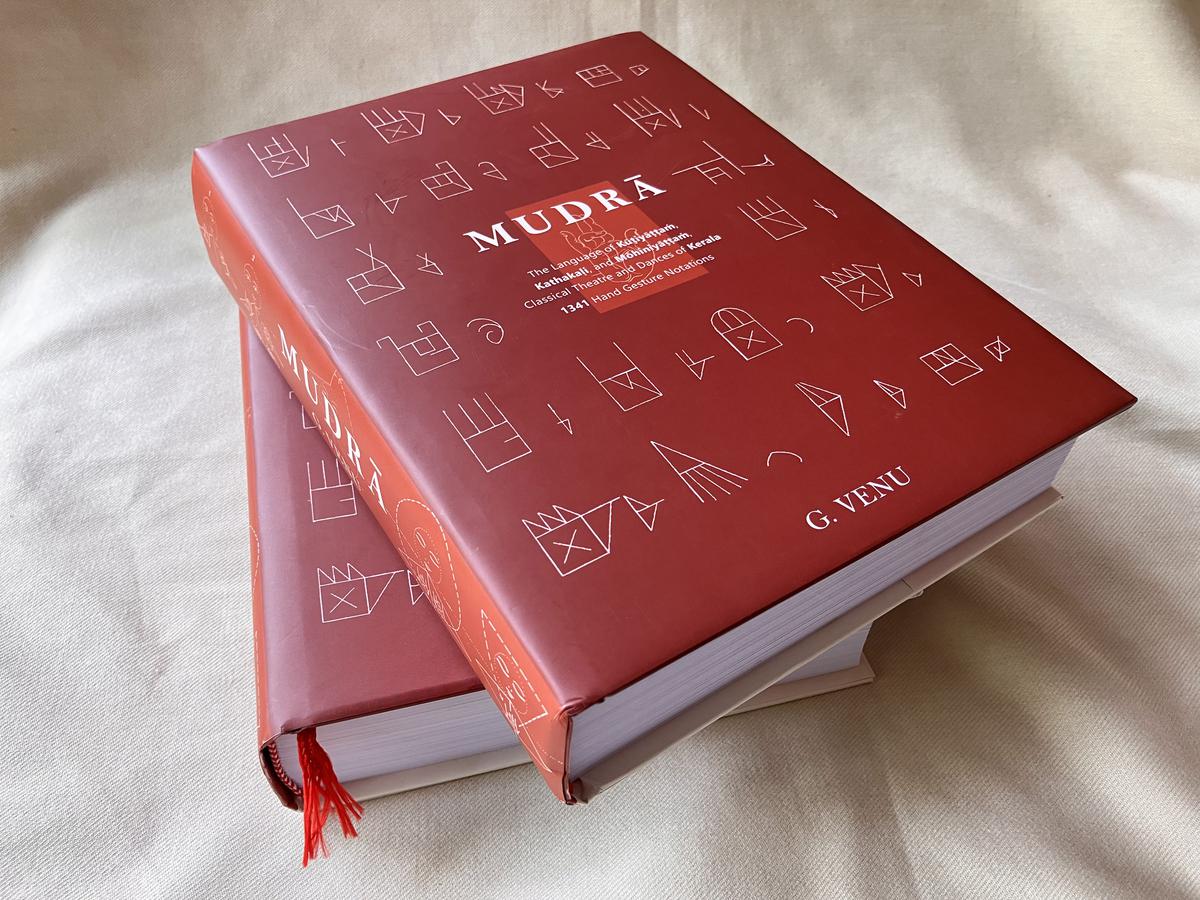
Koodiyattam exponent G. Venu.
| Photo Credit: THULASI KAKKAT
G. Venu’s latest book, Mudra, is a manifestation of his passion that he had nurtured as a student of Kathakali under the doyen Guru Gopinath. The 706-page book is divided into 24 chapters and contains 1341 notations of hasta mudras in Koodiyattam, Kathakali and Mohiniyattam was released online recently.
Dance notations are alien to our culture unlike the West, where a system called ‘Labanotation’ was in vogue more than five centuries ago. The only Indian to make use of it was scholar Kapila Vatsyayan, who had applied it to some of the dances, but did not pursue it further.
For effective communication
Even as his Kathakali training was in progress, Venu could realise how the system of hand gestures are complete by themselves as a language for effective communication. If this language is to be recorded, its alphabets have to be coined, he felt. So while watching performances by the great masters of his time, he was engaged in recording the new mudras. As time went by, the collection contained almost all those that were employed in Kathakali.
Koodiyattam exponent G. Venu. P
| Photo Credit:
THULASI KAKKAT
The dance-drama tradition not only entails a large kinetic vocabulary of micro-movements of the hands, different parts of the face, complicated footwork, but also stylised movements of all parts of the body from head to foot. Venu persevered for years to record this, which has led to a new comprehensive system of notations. He shared it with the then Kathakali doyens including Chengannur Raman Pillai and renowned artist K. C. S. Panikker in Chennai, who were all impressed by this ingenious system.
Initially, Venu designed notations for the basic 24 mudras in Hasthalakshanadeepika, the book on which the Kerala art forms are anchored. They were depicted on a four-line horizontal staff, the three spaces between which divide the body into three parts. The top most space denoted the mudras to be shown in a line with or above the head and also the accompanying facial expressions. The second one depicted those to be shown in line with the chest and the third, those below the waist. The graphics in this connection are lucid and can be followed by any avid artiste. Admittedly, Kathakali entails mudras other than explained in this book that have been contributions of great masters. Venu added them too.
Later in collaboration with Nirmala Panikker, his wife, who is also an acclaimed Mohiniyattam dancer, researcher, choreographer and guru, the system was also employed in this lyrical dance form. The book on Mohiniyattam was published in 1983.
As for Koodiyattam, his guru, Ammannur Madhava Chakyar had taught him ‘Ramayana Samkshepam’, a singular method that helped the actor enact all plays based on Ramayana only through mudras. As the Guru explained each, Venu recorded them and finally the unique book was published in 2013, after three years of hard work.

The book Mudra by Koodiyattam exponent G. Venu.
| Photo Credit:
Special Arrangement
Mudra is a compilation of all the above and, therefore, an exhaustive work. Interestingly, the book entails the history of evolution of the three art forms right and also notations for attaprakarams (acting manual) of Ramayana Samkshepam and cholkettu in Mohiniyattam.
Mastering the technique could be immensely helpful for any choreographer to record his production and could prove an effective tool for dissemination.
Published by Natanakairali, Mudra is priced at Rs 3,000.
For all the latest Entertainment News Click Here
For the latest news and updates, follow us on Google News.
